Reliability and development of NPG
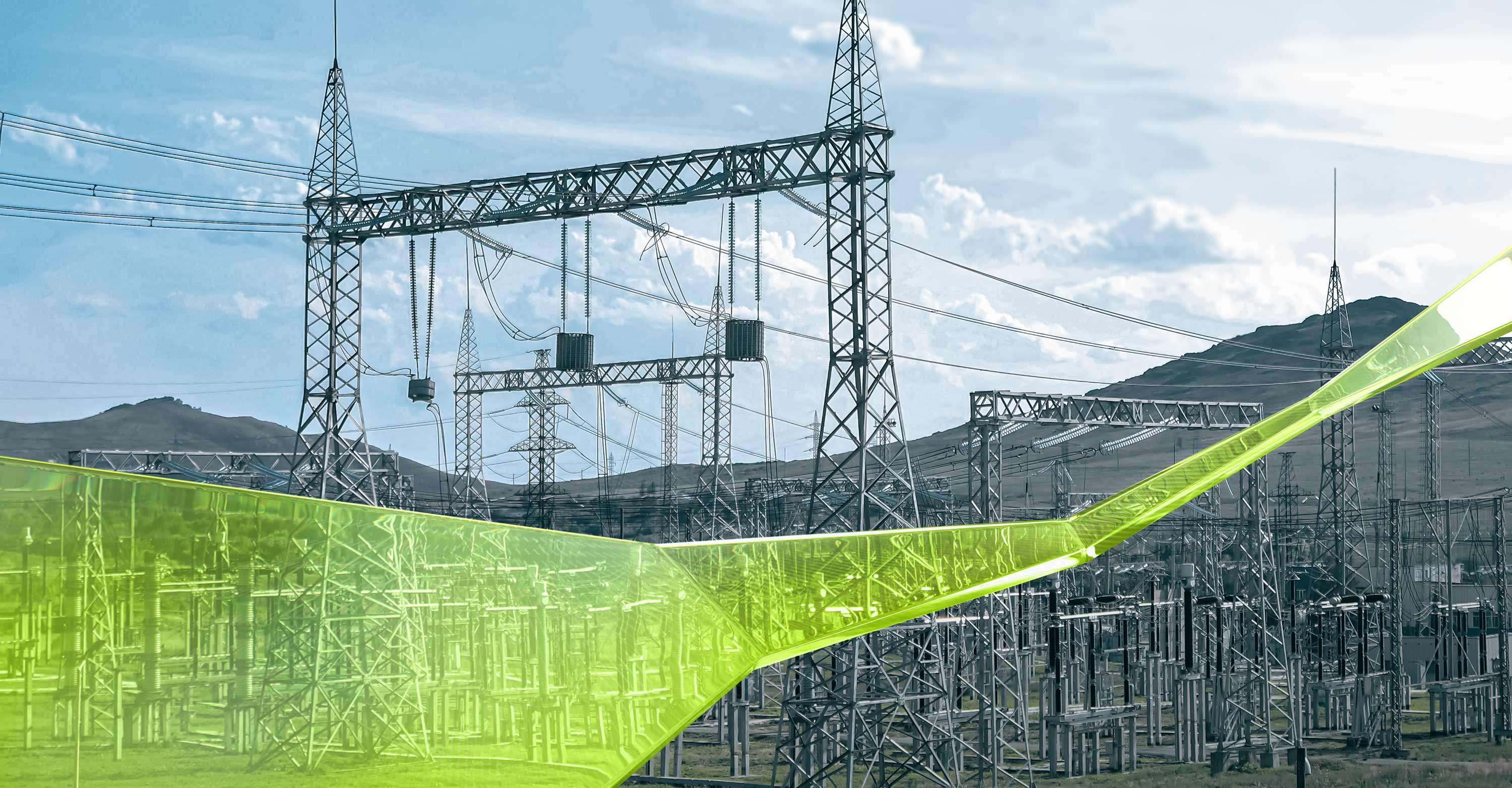
03
Research and development activities
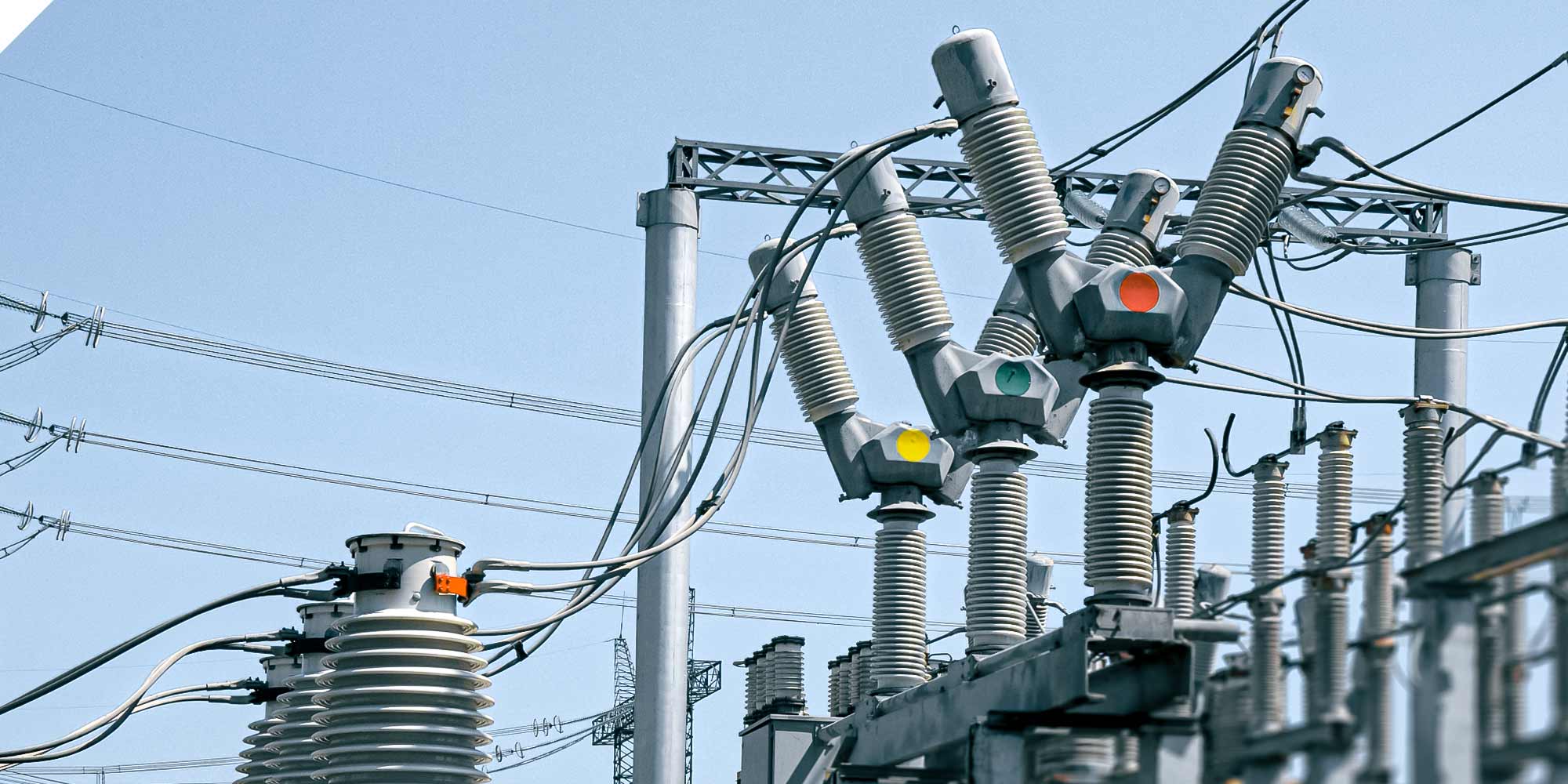
The Company’s R&D management activities are regulated by relevant internal documents that establish uniform requirements for the organization, planning, accounting, control of execution and acceptance of R&D commissioned by KEGOC JSC. R&D is considered as a process that covers the entire life cycle from defining tasks to evaluating and taking into account the actual effect of using the development results in the Company’s practical activities.
Conducting R&D in the Company is aimed at achieving the Company’s strategic goals in accordance with the KEGOC JSC Development Plan and KEGOC JSC Innovation and Technology Policy.
The main goals of organizing R&D in a Company are:
- creation, systematization and development of R&D planning and execution processes, taking into account their priority and relevance for the innovative and technological development of the Company;
- ensuring effective interaction of processes related to the development and use of scientific and technical products;
- implementation of R&D results to improve the efficiency and quality of production and business processes;
- monitoring the achievement of targets.
The main directions of technological development of KEGOC JSC are:
- innovations;
- R&D;
- innovation and inventive activities.
KEGOC JSC technological development indicators over the past 5 years
| 2020 | 2021 | 2022 | 2023 | 2024 | |
|---|---|---|---|---|---|
| Total costs, million tenge, including for: | 1,887.43 | 236.97 | 3.72 | 15.09 | 56.75 |
| Innovations | 1,834.97 | 215.50 | - | - | - |
| R&D | 45.14 | 19.80 | - | - | 43.55 |
| Innovation activities | 7.32 | 1.67 | 3.72 | 15.09 | 13.20 |
| Number of employees engaged in research activities, people | 26 | 26 | 26 | 26 | 26 |
Implemented projects of technical and economic research (IRE), scientific research (R&D) and development work (R&D)
| № | Project name | Implementation year |
|---|---|---|
| 1 | R&D on reducing power losses in 500 kV PTL with OPGW | 2017–2020 |
| 2 | R&D "Study of the effectiveness of AVR settings of system power plants to ensure static and dynamic stability of 500-220 kV NPG of the Republic of Kazakhstan" | 2018–2022 |
| 3 | Feasibility study on the development of algorithms and creation of WACS automation based on WAMS synchrophasor measurements | 2019–2020 |
| 4 | R&D on identifying factors and sources of insulation contamination of electrical equipment "Western MES" | 2021 |
| 5 | Feasibility study on the possibility of using energy storage for UPS of the Republic of Kazakhstan | 2021 |
| 6 | Feasibility study on digital substation technologies | 2021 |
| 7 | Feasibility study on the selection of FACTS devices for reactive power compensation in UPS of the Republic of Kazakhstan | 2021–2022 |
| 8 | Feasibility study on the necessity of grounding shielding sheaths of control cables at substations with microprocessor-based relay protection and automation devices | 2023–2024 |
Innovation and inventive activities
13.199
million tenge
rewards paid for innovation proposals in 2024
Innovation and inventive activity (IIA) is carried out in accordance with the “Rules of Organization of Innovation and Inventive activity in KEGOC JSC and its subsidiary organization.”
The main advantage of IIA is the opportunity for each employee to participate in this process, which in turn makes it possible to minimize the time from birth to the implementation of an idea and reach the maximum number of employees of the Company.
The IIA defines ideas that can be applied in other departments of the Company and provides conditions for scaling the offer. The main objectives of the IIA organization are:
- activation of IIA and further development of mass technical creativity of the Company’s employees and UP to;
- increasing the interest of the Company’s employees and employees in the results of their work by providing moral and material incentives to the IIA.
In 2024, 16 applications were recognized as innovation proposals and remuneration was paid for innovation proposals in the amount of KZT 13,199 million.
In total, 278 innovation proposals were registered at KEGOC JSC during the period 2013-2024.
Registered innovation proposals in KEGOC JSC for the period 2013-2024
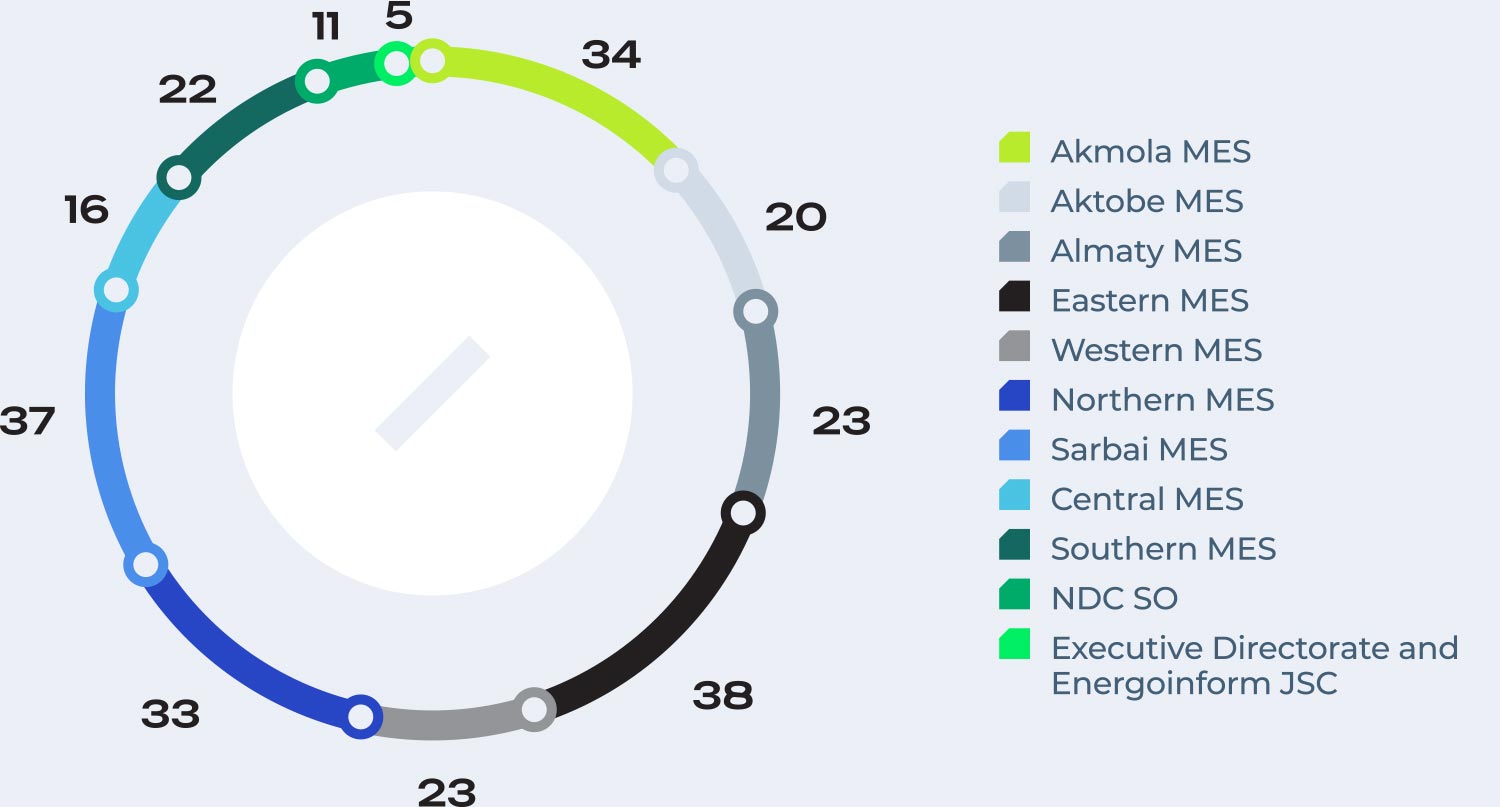
Innovations
According to the global trend, KEGOC JSC continues to work in the field of modern innovative and digital technologies, based on the introduction of various elements of intelligent management of network facilities (measurement, monitoring, control and management systems), on the basis of which a new generation of electric networks, the so-called “Smart Grid”, can be created.
Within the framework of these global trends, the “Concept for the development of the Electric Power industry of the Republic of Kazakhstan for 2023-2029” has established an indicator for the creation of an “Intelligent Energy System”. This system will provide data collection and processing, decentralized management of energy systems, integration of distributed generation, including RES, decision-making based on synchrophasic measurements and the introduction of FACTS devices. To implement the concept, the Ministry of Energy of the Republic of Kazakhstan has developed a technology architecture for all structures of the country’s fuel and energy complex (FEC).
SASB IF-EU-420a.2
The Company has implemented information systems such as SCADA, AFPC, TsSPA, WAMC, WACS, ASCAPC, SMiU, FOCL, Electricity Market Balancing System, and BIS. Among these, the 100% implementation of ASCAPC technology is particularly noteworthy.
As part of the implementation of the Smart Grid concept, KEGOC JSC has identified three main areas of digitalization of production processes that correspond to the Architecture of Digital information systems FEC (Fig. 17):
- Production Operations Management (MOM) is aimed at improving the reliability and efficiency of production operations, minimizing downtime and optimizing resources.
- Production Management Systems (MES) provide real-time monitoring, accounting, and management of production processes, including power system management and process monitoring.
- Automated control systems of technological processes (ACSTP)automation and control of technological processes, including substation systems, relay protection, diagnostics and emergency automation.
In the three above-mentioned areas, projects are currently being implemented to modernize the SCADA/EMS system and introduce a monitoring system based on synchronized WAMS technologies (Stage 2), which will improve the efficiency of dispatch control and the observability of UPS operating modes in the Republic of Kazakhstan, as well as ensure monitoring of stability reserves and assessment of the UPS status in the Republic of Kazakhstan.
In 2024, the Pilot Project “Introduction of Electricity Storage Systems in UPS RK” (Pilot Project) continued to be implemented to study the impact of electricity storage systems on UPS regulation when integrating RES with China Power International Development Limited, China Power International Holding Limited and the Association of Renewable Energy of Kazakhstan. According to the Pilot project, it is planned to install an electricity storage system with a capacity of 3.45 MW and a capacity of 7.72 MWh.
Also in 2024, work on the project “Development of algorithms in the Centralized Automatic frequency and power control system for managing electricity storage systems” was completed. The aim of the project is to increase the reliability of Kazakhstan’s NPG while integrating RES through the introduction of electricity storage systems (ESS). As part of the project, algorithms for automatic frequency and power control (AFPC) were developed to control the Electric energy storage system as a separate type of facility, taking into account their features and technical limitations.
Architecture of digital information systems FEC
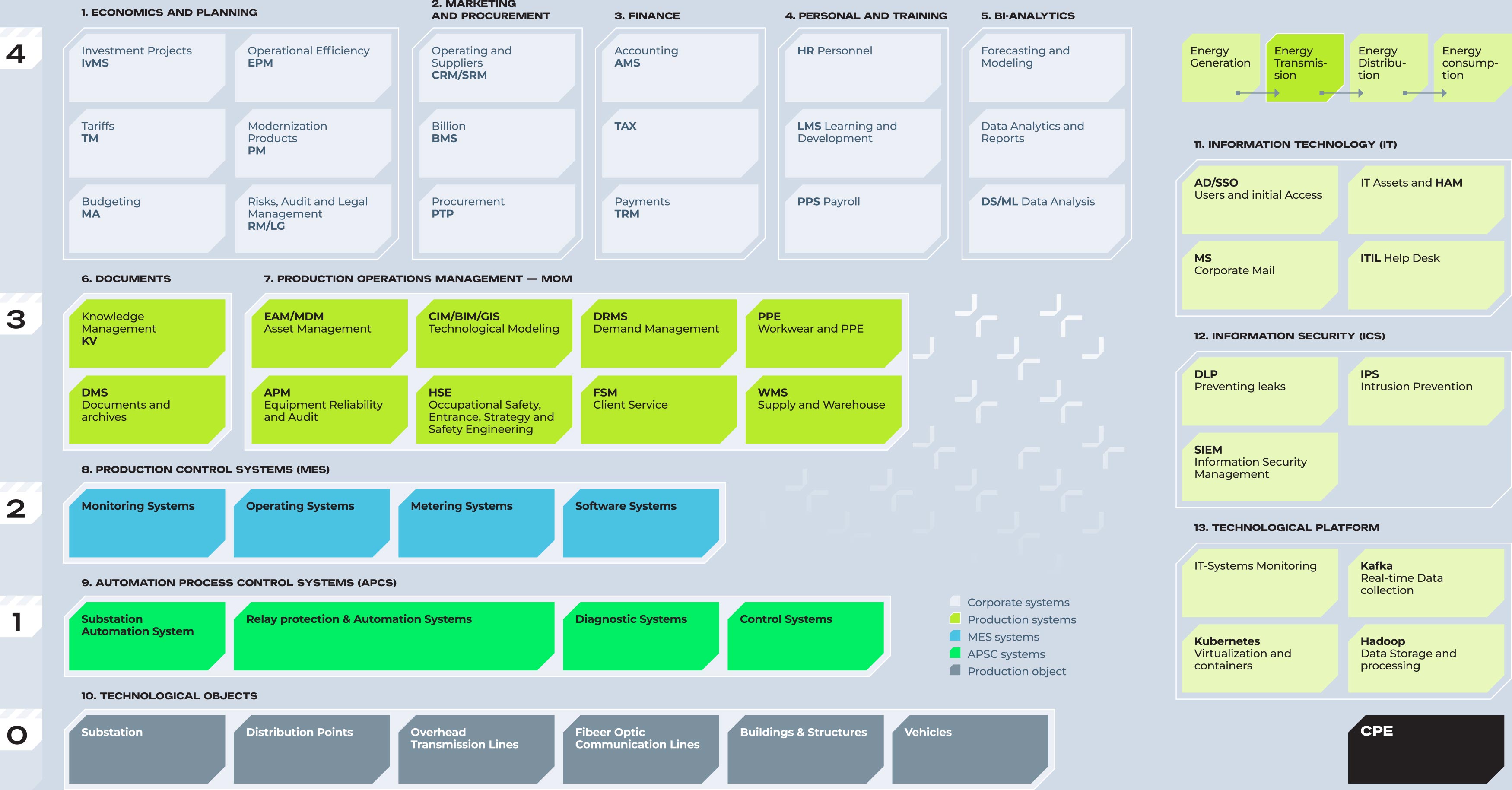
Artificial intelligence technologies
Artificial Intelligence (AI) technologies are opening new opportunities for the energy industry, becoming a key element in the digital transformation of power systems. AI is an effective tool for solving urgent tasks such as RES integration, increasing complexity of energy system management processes and the need to improve the reliability of energy supply.
In line with global trends in the field of digitalization, the “Concept for the development of artificial Intelligence for 2024-2029” provides target indicators for increasing the number of products using AI. It provides for the implementation of AI projects, as well as support for scientific research through grant and targeted program financing.
According to the KEGOC JSC Development Plan (Strategy) for 2023-2032, the Company will continue to integrate AI technologies within the framework of building an intelligent energy system in Kazakhstan. In particular, AI will be used for the following tasks:
- forecasting of electricity generation and consumption;
- forecasting the technological consumption of electricity during transmission over NPG, followed by an analysis of the actual (reportable) losses of electricity by components;
- forecasting the technical condition of production assets, detecting defects;
- forecasting technological disruptions.
Strategic initiatives/areas of AI application
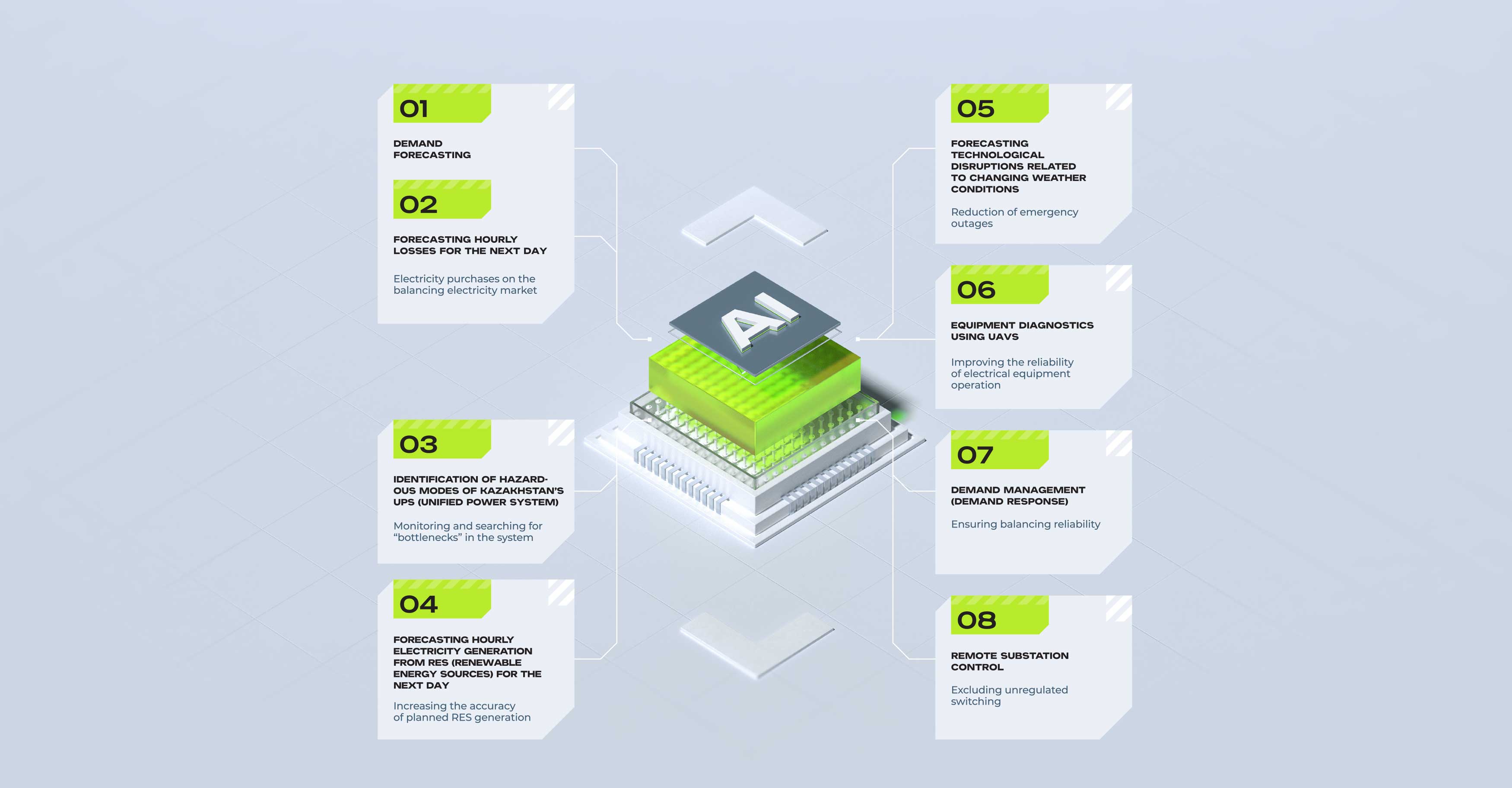
In 2024, in order to implement the KEGOC JSC Development Plan (Strategy), measures were launched to integrate AI technologies as part of the SCADA system modernization project. These works are aimed at:
- forecasting the production and consumption of electricity;
- forecasting of technological power consumption.
One of the key areas of 2024 was cooperation with Assystem SA on the implementation of the pilot project “Digital twin of a substation transformer”. The digital transformer model will provide real-time monitoring of the condition, identify potential malfunctions and improve the accuracy of forecasts.